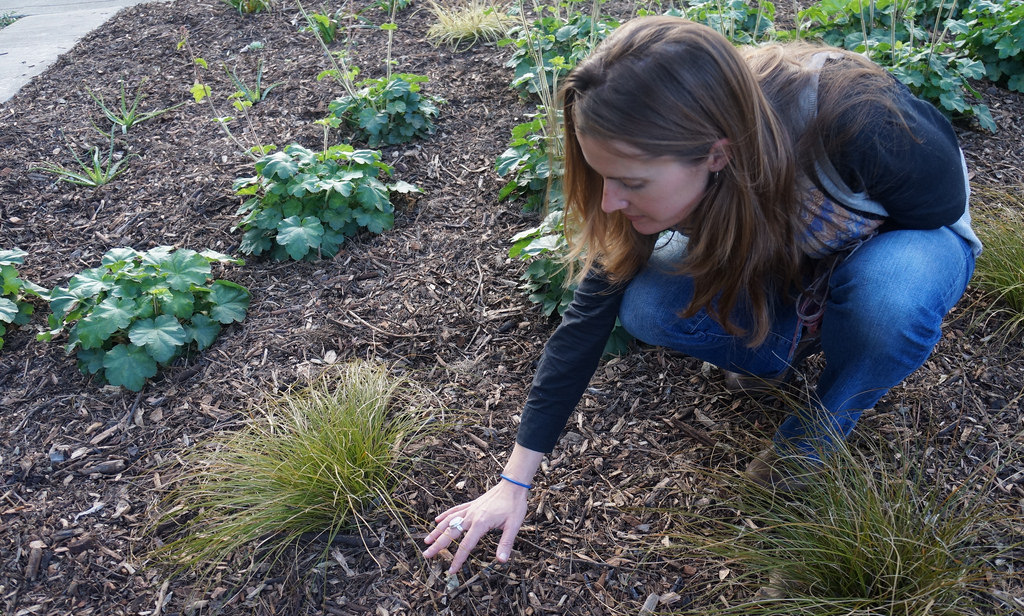Spring & Fall Planting Guide
Every garden is different, but each planting project should begin the same way. Before your spade touches the dirt, take stock of your yard or garden with an eye toward soil type, wind exposure, drainage, and available sunlight. This information will help you make smart decisions about appropriate plants, soil amendments, and fertilizers.

Make Amends with Your Soil
Enhance poor soil by adding a rich organic mix like Master Nursery’s Black Forest Tree & Shrub Mix. Perennials and roses can benefit from the addition of Master Nursery’s Bumper Crop. To amend poor soil, mix 2/3 of your garden’s native soil with 1/3 Master Nursery’s Black Forest Tree & Shrub Mix or Master Nursery’s Bumper Crop and backfill around the sides of the root ball.
In heavy clay soils, very coarse sand may be added to the backfill. Blend equal amounts of Master Nursery Black Forest Tree & Shrub Mix OR Master Nursery’s Bumper Crop, very coarse sand, and native soil.
All amendments should be blended thoroughly with your garden’s native soil.
Dig In!
Once the soil has been prepared, it’s time to break ground. In general, the planting hole should be dug 1 ½ times as wide, but no deeper than, the size of the root ball or container. Do not dig the planting hole too deep, or excess settling may occur.
Gently remove the plant from the container by the root ball. Keep in mind that it may be necessary to cut the container if the plant has become pot-bound. Place the root ball in the planting hole so the top of the root ball is slightly higher than surrounding soil to allow for natural settling and an additional 1-2” of mulch.
If a root ball is wrapped in burlap, cut all the strings and burlap away from the stem after the root ball is placed in the planting hole. Most burlap is biodegradable and need not be removed from the lower root ball. Synthetic burlap MUST be cut or removed. DO NOT try to cut or remove wire baskets while the plant is out of the planting hole, as the root ball may break apart. The top of the wire basket may be cut away with heavy wire shears only after root ball is partially backfilled.
Before you refill the planting hole, water the soil thoroughly to help eliminate air pockets around the root ball. Finish backfilling after all the visible water has drained.
Feeding Time
Heavy fertilization is not recommended for new transplants, but do ask the experts at Rohsler’s Allendale Nursery & Florist about the benefits of Espoma Bio-Tone Starter. This product, which can be applied before the mulch is installed, will feed your new plant for the first 6 weeks. After that, plants that were installed in the spring can be fed bi-monthly through mid-August with Master Nursery All Purpose 18-18-18 water soluble fertilizer. This product will provide the nutrients your new plant needs to establish itself during that critical first year.
A late fall granular feeding (at ½ strength) around mid-November is recommended. Holly-tone is designed for acid loving plants. Plant-tone or Tree-tone are suggested for all others.
Dress it Up
Add a 1-2” layer of bark mulch around the base of the plant to help keep the root zone from drying out. Creating a saucer around the stem helps capture and conserve water, but use caution. Piling mulch around the stem or crown of the plant can attract rodents and may encourage the growth of disease organisms on the stem.
The Key to Success
The #1 cause of plant failure in the first year is improper watering.
Young plants need the equivalent of one inch of water per week. Deep, less frequent watering is better than frequent, superficial watering.
“Water in” your newly-installed plant with Root Master B-1 with Hormone Solution once a week for the next 4 to 6 weeks. This will help the plant generate white root hairs.
Visually check new plantings often. Do not assume sprinkler systems are doing the proper job. Remember that container gardens may need extra water since they tend to dry out faster than plants growing in the ground.
Of course, improper watering includes overwatering! How much is too much? Check our Plant Aftercare sheet for additional information.
